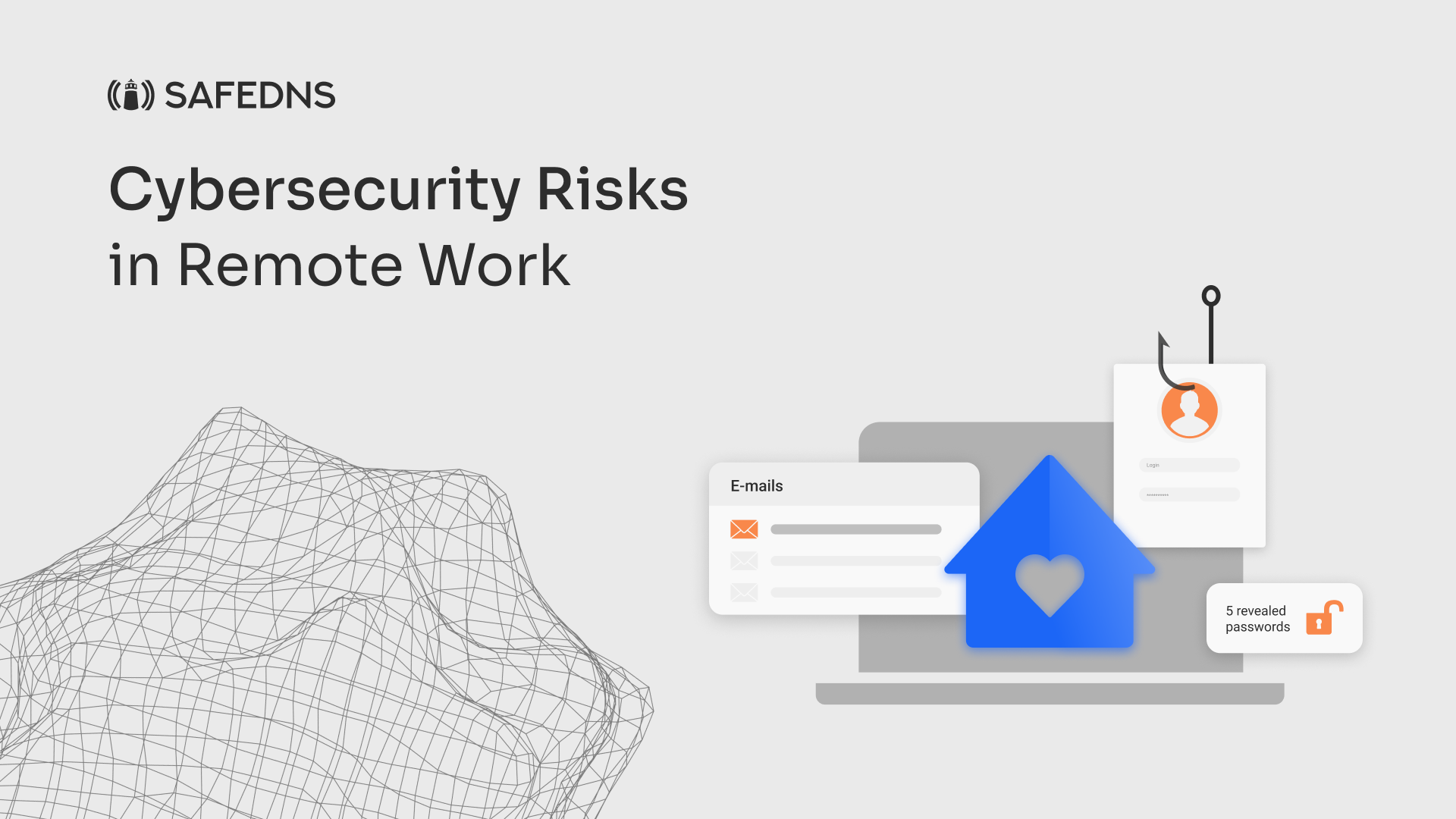
Cybersecurity Risks in Remote Work
In recent years, remote work has become increasingly prevalent, allowing employees to work from the comfort of their homes. However, with this convenience comes a heightened risk of cybersecurity threats, with phishing attacks leading the pack. Unlike traditional office settings where IT teams handle cybersecurity, in remote work security, workers must take the initiative to protect themselves and their organizations.
- Since the shift to remote work, ransomware attacks have increased by 20%
- 63% of businesses have experienced a data breach due to remote employees
- 80% of organizations have seen an increase in email phishing attacks since remote working began
These statistics serve as a clear warning about the critical significance of cybersecurity in the context of remote work. They underscore the imperative for organizations to prioritize and invest in robust cybersecurity measures to safeguard their corporate network, digital assets and sensitive information. It is essential for employers to ascertain that their corporate networks are fortified with the latest security protocols and that employees are equipped with secure devices for remote network access. Neglecting these precautions exposes organizations to the heightened cybersecurity risks of remote working, such as data security, cyberattacks and data breaches. These statistics should serve as a resounding call to action for employers to take proactive steps in fortifying their network defenses, thereby safeguarding both their critical data and the well-being of their remote workforce.
Remote work environment can be particularly vulnerable to various threats. Let's examine these risks and explore strategies to mitigate them.
Remote Working Risks & Mitigation
- Weak Passwords and Lack of Multi-Factor Authentication:
Weak passwords and the absence of multi-factor authentication (MFA) are a significant concern in remote work scenarios. Cybercriminals often target accounts with easily guessable passwords, making it crucial to use strong, unique passwords for all online business accounts. Implementing MFA adds an extra layer of security by requiring users to provide two or more forms of authentication, such as a password and a one-time code sent to their mobile device. This additional step can significantly up their security solutions to reduce the risk of unauthorized access to sensitive data.
- Unsecured Wi-Fi Networks:
Employers should be aware that remote workers frequently connect to various Wi-Fi networks, including public hotspots. These networks are often less secure than corporate virtual private networks, making them a prime target for hackers. To mitigate this risk, employers can implement a web filtering solution within their organization's network infrastructure. Web filtering tools can help block access to malicious websites and filter out harmful content, reducing the chances of employees encountering threats while connected to unsecured networks. Additionally, employers can encourage their remote workforce to use VPNs and ensure that employees' home Wi-Fi networks are secured with strong passwords. This proactive approach enhances overall cybersecurity for remote teams.
- Phishing Detection and Notification:
Phishing attacks have become increasingly sophisticated, and remote workers are not immune to them. Recognizing phishing attempts is crucial. Train employees to identify suspicious emails, links, and requests for personal sensitive information. Employ advanced email filtering and security tools to detect and block phishing attempts before they reach the inbox.
- Lack of Security Updates:
One common oversight in remote work environments is neglecting to update software and operating systems promptly. Outdated software can contain known vulnerabilities that cybercriminals can exploit. Enable automatic antivirus software updates and regularly check for patches and updates to ensure your devices are protected with the latest security measures.
- Data Backup and Recovery:
Data loss can be disastrous, especially in remote work scenarios where sensitive company data from personal computers may be scattered across various devices and locations. Implement a robust data backup and recovery strategy. Regularly back up critical data to secure, remote servers or cloud or centralized storage solutions, and test the restoration process to ensure that data can be recovered in case of an incident.
- Insufficient Employee Training:
Remote workers must be adequately trained in cybersecurity best practices. Invest in cybersecurity training programs to educate employees about the various security risks that they may encounter while working remotely. Training should cover topics such as identifying phishing attempts, password security, and secure file sharing.
Cybersecurity Checklist for Employees
- Are your home devices protected by comprehensive antivirus and internet security software?
- Have you taken steps to secure your devices, ensuring encryption is enabled, and you've activated features like "Find my device" and remote wipe?
- Are you using a Virtual Private Network (VPN) for secure connections?
- Have you secured your home Wi-Fi network with strong encryption and a unique password?
- Are your passwords strong, unique, and regularly updated?
- Do you stay vigilant against phishing scams, refraining from clicking on unfamiliar links or opening unsolicited email attachments?
- Is your operating system up-to-date and supported by regular updates?
- Do you keep all software on your devices, including applications and programs, updated to the latest versions?
- Have you enabled two-factor authentication where applicable?
Cybersecurity Checklist for Employers
- Do you have a documented work from home security policy?
- Do you have a BYOD (Bring Your Own Device) policy?
- Do you provide cybersecurity awareness training to employees?
- Are you ensuring that staff use a VPN, and is it up to date with security patches?
- Do you encourage centralized data storage and regular data backups?
- Do you equip company devices with approved antivirus and internet security software?
- Do you promote strong passwords and consider password manager usage?
- Do you encourage two-factor authentication?
- Do you use encryption software to protect company data?
In conclusion, we haven't reached a final destination in remote work, and the future brings new challenges, security threats, and opportunities. Organizations have to make choices. They might consider going back to traditional offices with better security control, but that might not be practical in our remote-friendly world. So, it's essential to keep updating and strengthening security controls and measures.
There's also the idea of giving remote workers the tools to secure their personal devices and home networks as well as office environments. This might become necessary in the future to protect sensitive data.
Staying alert, informed, and ready can help both individuals and organizations navigate remote work challenges while keeping their digital environments safe.
Take advantage of the SafeDNS trial period and try all the best features

